In 2018, webmasters received about 4 million messages from Google with notifications about manual actions taken on their websites (the data for 2019 has not been published yet). A Google penalty can strike like a lightning bolt out of nowhere, leaving you puzzled about what to do next.
A penalty from the Google Spam Team is a manual restrictive measure for violating Google’s Webmaster guidelines; it results in a websites’ organic visibility tanking rapidly.

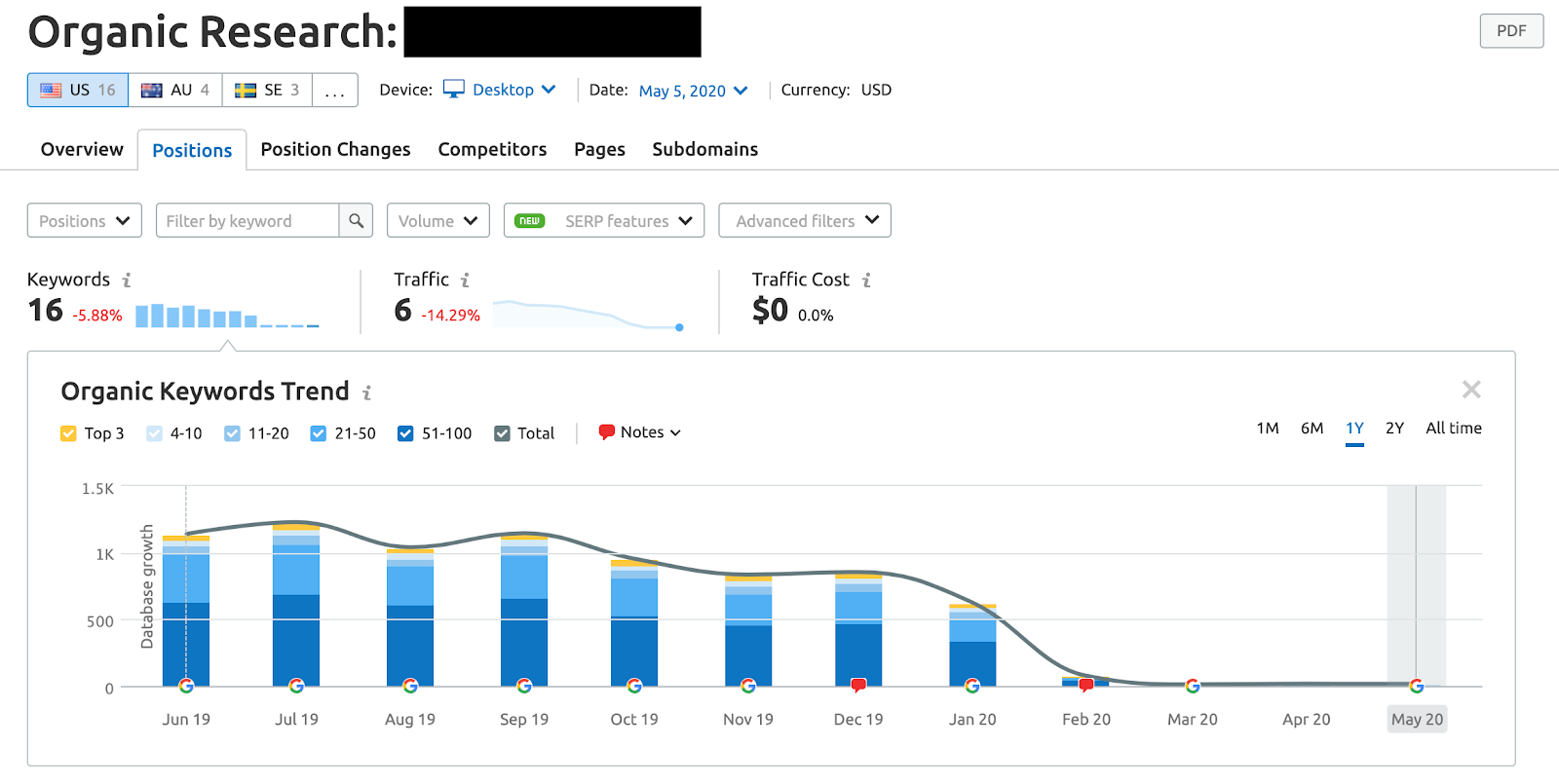 Screenshots of a website hit by a link penalty in February 2020. From 1,5k visits per month and rankings for over 500 keywords to almost 0 within days.
Screenshots of a website hit by a link penalty in February 2020. From 1,5k visits per month and rankings for over 500 keywords to almost 0 within days.
Demystifying Google Penalties for Toxic Inbound Links
Usually, getting a manual penalty from Google comes as a result of utilizing black-hat SEO tactics and not making sure a website's backlink profile is natural and adheres to Google’s guidelines.
Among the most common triggers for a Google link penalty are unnatural outbound and inbound links. Unnatural links are also known as “harmful”, “spammy”, or, as we call them at SEMrush, “toxic”. Both inbound and outbound links can get your website penalized.
Outbound links are located on your website and point to other websites. You can get a penalty for outbound links for linking to another website the way that goes against Google’s guidelines — for creating a “pattern of artificial, deceptive, or manipulative inbound links”, as Google calls it. This type of penalty has its own pitfalls and deserves to be covered in a separate article.
By the same token, inbound links are the links at external domains pointing to your website or its specific pages. These links constitute your backlink profile, and you should always keep an eye on them.
We have a dedicated metric, Toxic Score, that shows how good each inbound link in your profile is.
In a recent study, we used our Backlink Audit tool to collect data for over 830 backlink profiles of SEMrush and industry forums users whose websites had been hit by penalties during the past 2 years.
Our goals were the following:
Spot the factors and correlations that trigger penalties.
Identify how frequently each penalty case occurs.
Put the precision of our Backlink Audit’s algorithm to the test when assessing backlink profiles and labeling links as toxic.
Find ways to enhance the tool to provide the best solution for tackling Google penalties and avoiding them in the future.
Create a basis for a step-by-step guide that will help you to recover from Google penalties and build a strong backlink profile.
A comprehensive list of factors and their combinations that cause manual penalties based on link “unnaturalness” is not completely obvious. It makes it difficult for SEO professionals and webmasters to detect the exact weak spots of a backlink profile.
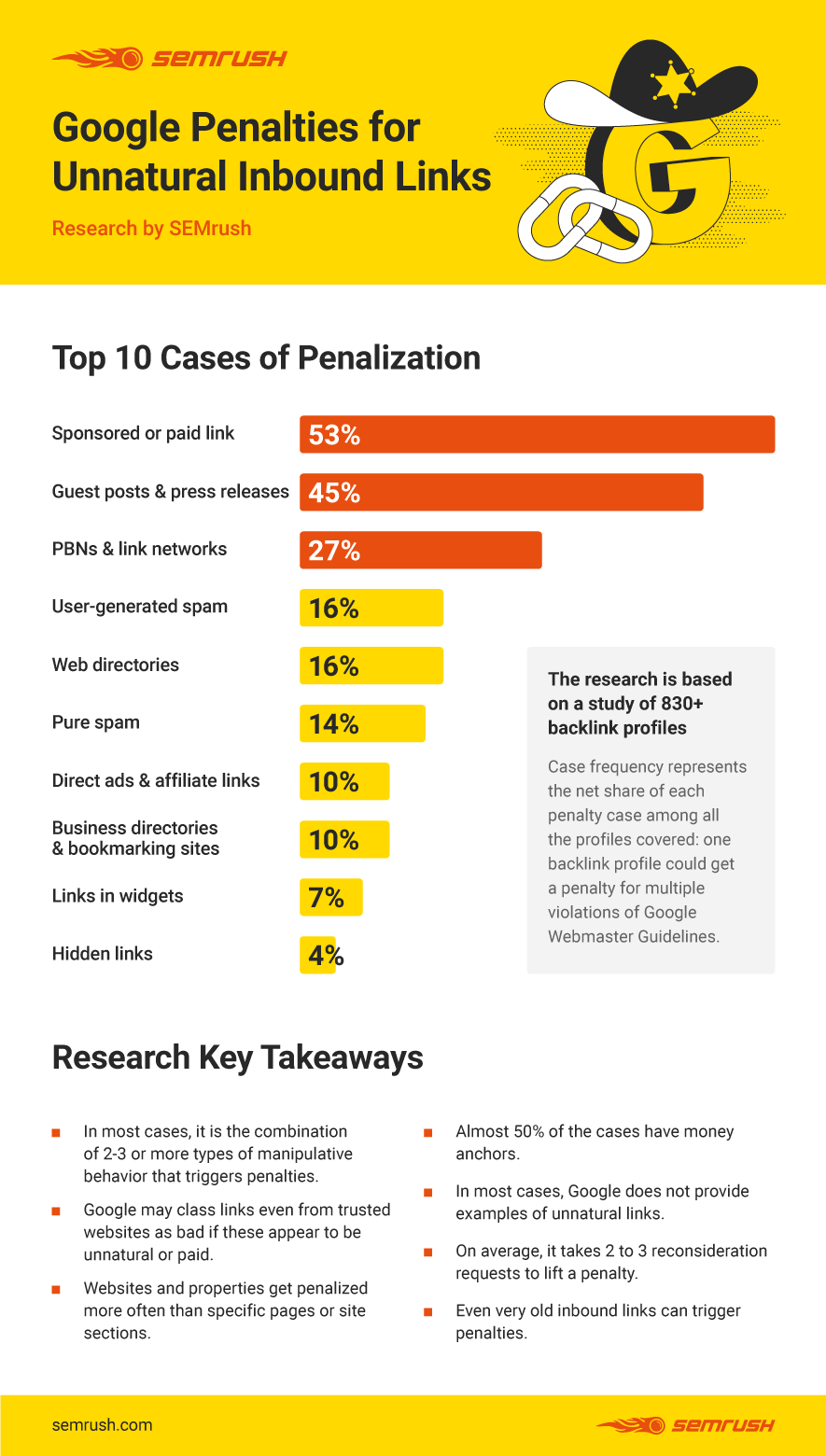
Based on the results of our research, let’s see what we need to find toxic links, deal with Google penalties, how to avoid them in the future, and how to build a strong backlink profile.
Our Key Findings Regarding Unnatural Inbound Links:
1. A Single Bad Link Does Not Lead to a Penalty
No, you can’t fall under penalty for a single unnatural link. We have analyzed the examples of unnatural inbound links that Google provided to the webmasters and ran a detailed profile audit of the penalized websites.
Judging from this data, usually, a combination of 2-3 or more manipulation types (links) triggers penalties. This means that once a month, you have to audit your backlink profile to detect irregularities — for outbound and inbound links.
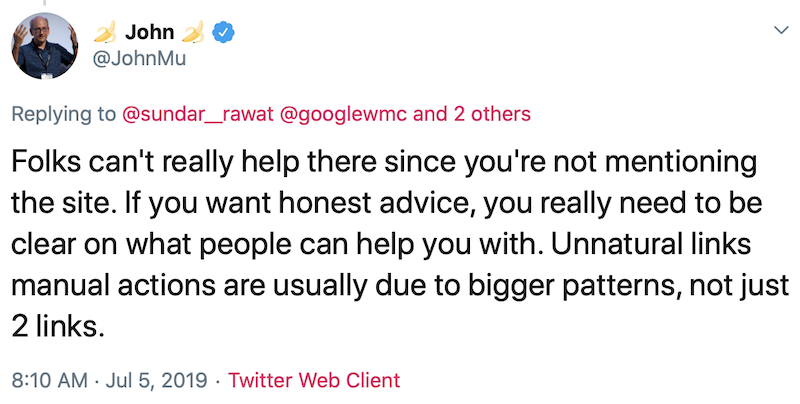
2. Lifespan Doesn’t Affect the Toxicity of Links
Google does not distinguish between recent and old toxic links, which means that bad backlinks that were built years ago could still come back to haunt you in a manual action. Websites that got unnatural inbound links penalties in 2019-2020 were penalized because of links from 2016-2018.
3. Reputation Doesn’t Matter to Google When Interpreting a Link's Unnaturality
Google doesn’t necessarily discriminate based on the source of your inbound links; if a link demonstrates manipulative or unnatural tactics, it will be marked down.
4. When Penalizing, Google Goes for Full Embargo
Entire websites and properties get penalized more often than specific pages or site sections.
5. Exact Match Anchor Text Needs to Be Treated Very Carefully
Almost 50% of the cases had money anchors - links using exact match anchor text for keywords a website is trying to rank for. Google algorithms are very good at spotting such anchors and signaling them to the Google Spam Team.
6. In Most Cases, You Are on Your Own
When Google contacts webmasters, they typically do not provide examples of unnatural links. You can expect to see a couple of examples of bad links pointing to your website only after you file a second reconsideration request. That is another factor that complicates the recovery from a penalty.

The above question is from a webmaster in Google Console Help concerning a lack of examples of unnatural links. Click to see his full question.
7. Removing the Penalty and Recovery From It Takes Time
On average, it takes 2 to 3 reconsideration requests to lift a penalty. As a result, it can take up to 6 months to lift an inbound link penalty. If you are not cautious and patient with filing reconsideration requests, you could just extend the process. Stay calm and follow all the steps Google outlines.
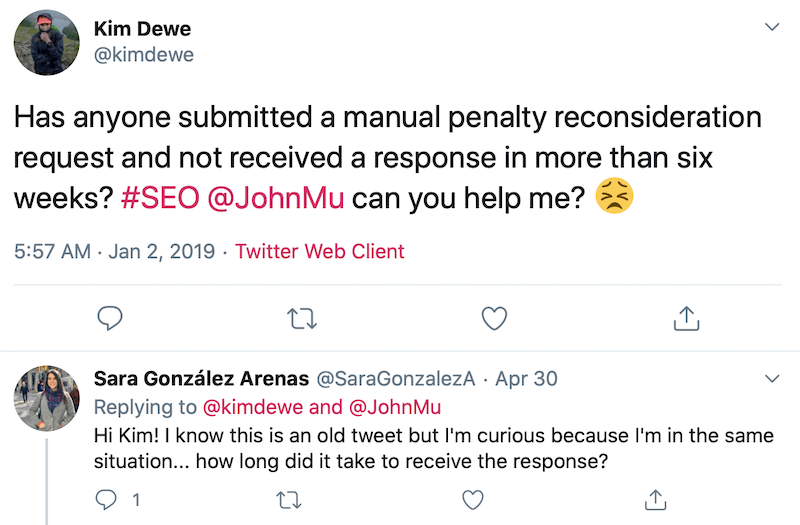
Considering all this, running a routine monthly audit of your backlink profile would be a good habit to have, as it can help you determine which links are causing you a problem.
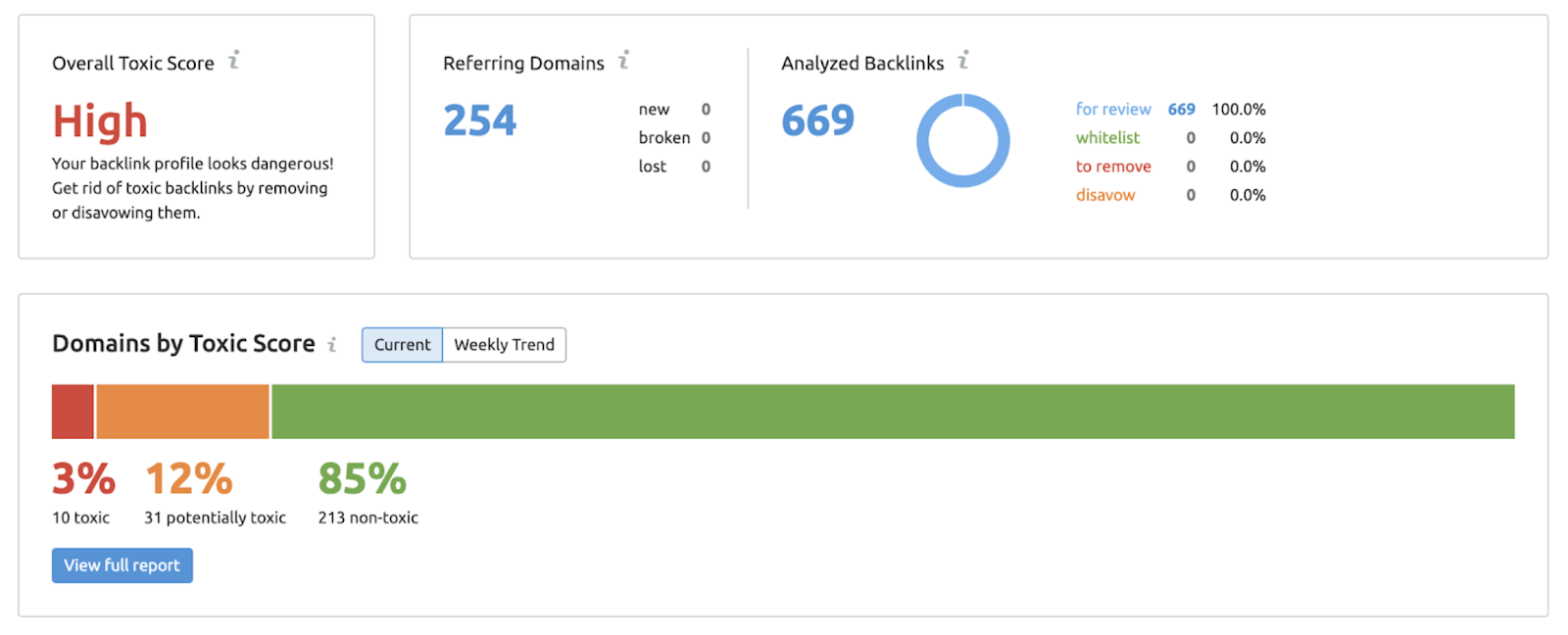
Based on these discoveries, we have enhanced our Backlink Audit Tool algorithms and the way Toxic Score is calculated. In addition to many changes, we have improved the accuracy of pure spam cases detection and the automatic detection of compound and money anchors.
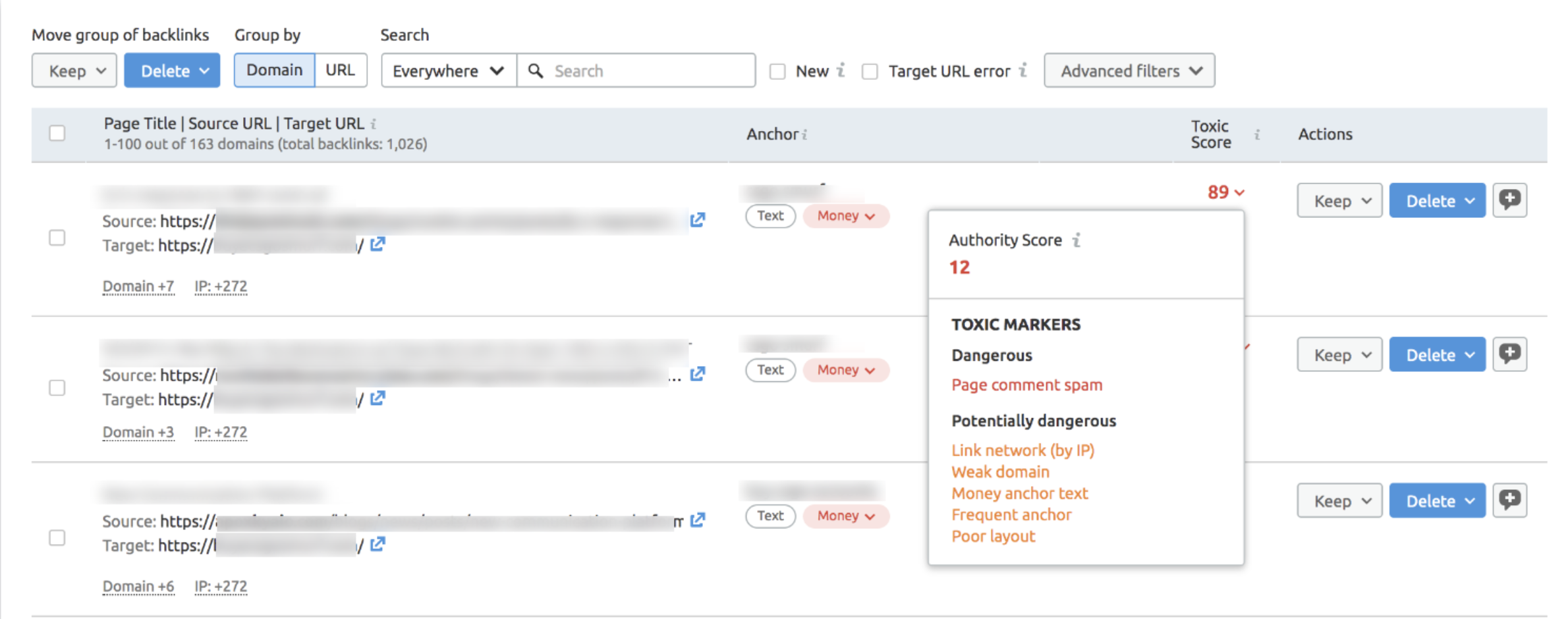
Besides that, we have introduced the new Frequent money anchor filter that lets you quickly detect potentially toxic backlinks with anchors. These improvements make it easier to spot probable threats to your website and file reconsideration requests based on accurate data.
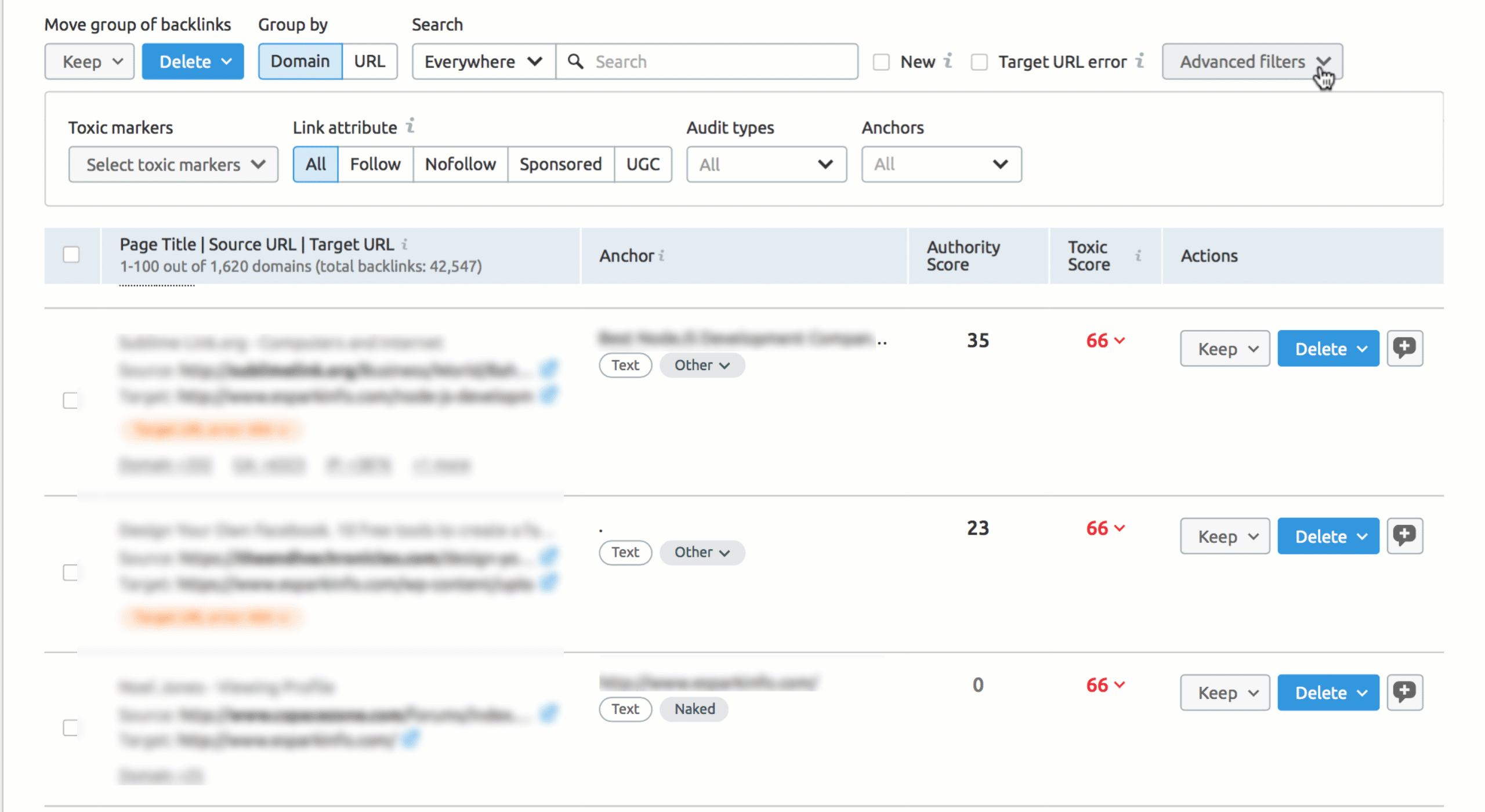
Now let’s dig deeper and look at the various types of Google penalties for inbound links.
What Types of Inbound Links Trigger a Google Penalty?
Each penalty case we reviewed turned out to have phantom nuances which we uncovered in the process of the research. Below, we elaborate on them and talk about the steps for fixing bad link penalties and avoiding them in the future.
We studied the following penalty cases:
Sponsored and paid links in articles and blog posts.
Guest posting and press releases.
PBN or link networks.
User-generated spam.
Web directories and link listings.
Pure spam.
Direct ads and affiliate links.
Business directories and bookmarking sites.
Links in widgets.
Hidden links.
Sitewide links.
Minor cases.
Note: “Case frequency” represents the net share of each penalty case among all the profiles covered — one backlink profile could get a penalty for various violations of Google Webmaster Guidelines.
Sponsored and Paid Links in Articles and Blog Posts
Case frequency: 53%
In many cases, the web pages that triggered a penalty had sponsor signals in a form of specific phrases paired with a keyword-rich dofollow link in anchor text.
Some common phrases were:
The article was sponsored by
Information was provided by
Advertorial content
Advertorial post on behalf
This text doesn't have to be next to the link.
If you are using these words without nofollow or without disclosing a partnership, they could act as a red flag for the Google Spam Team and lead to a penalty. Learn how to handle these kinds of links in this guide on sponsored links.
Buying or Selling Links
If you are into the buying or selling links that are supposed to get link juice flow, be ready to get penalized by Google. Such actions include:
Exchanging money for links (or posts that contain links).
Exchanging goods or services for links.
Sending someone a “free” item in exchange for an article about it and posting a link to it.
Tips to Avoid a Penalty
Don’t promote products or services directly without using the nofollow or sponsored attributes, such as rel="sponsored".
Request a “rel=sponsored” attribute when placing a link to your offering on another site.
Avoid excessive usage of keyword-rich anchors in the text (if used, try to diversify the keywords used so you don't have hundreds of the same anchor text/backlink).
Tips to Get a Penalty Removed
Set/request rel=”nofollow” or rel=”sponsored” attributes.
Disavow if you have tried contacting a website’s administrator but it has been impossible to find them or to get them to add the nofollow or sponsored attribute.
NOTE ON DISAVOW: Please be careful using the disavow option because it is not always needed. Please read and follow Google's disavow guidelines before using it. As Google says, "If used incorrectly, this feature can potentially harm your site’s performance in Google’s search results."
Guest Posting and Press Releases
Case frequency: 45%
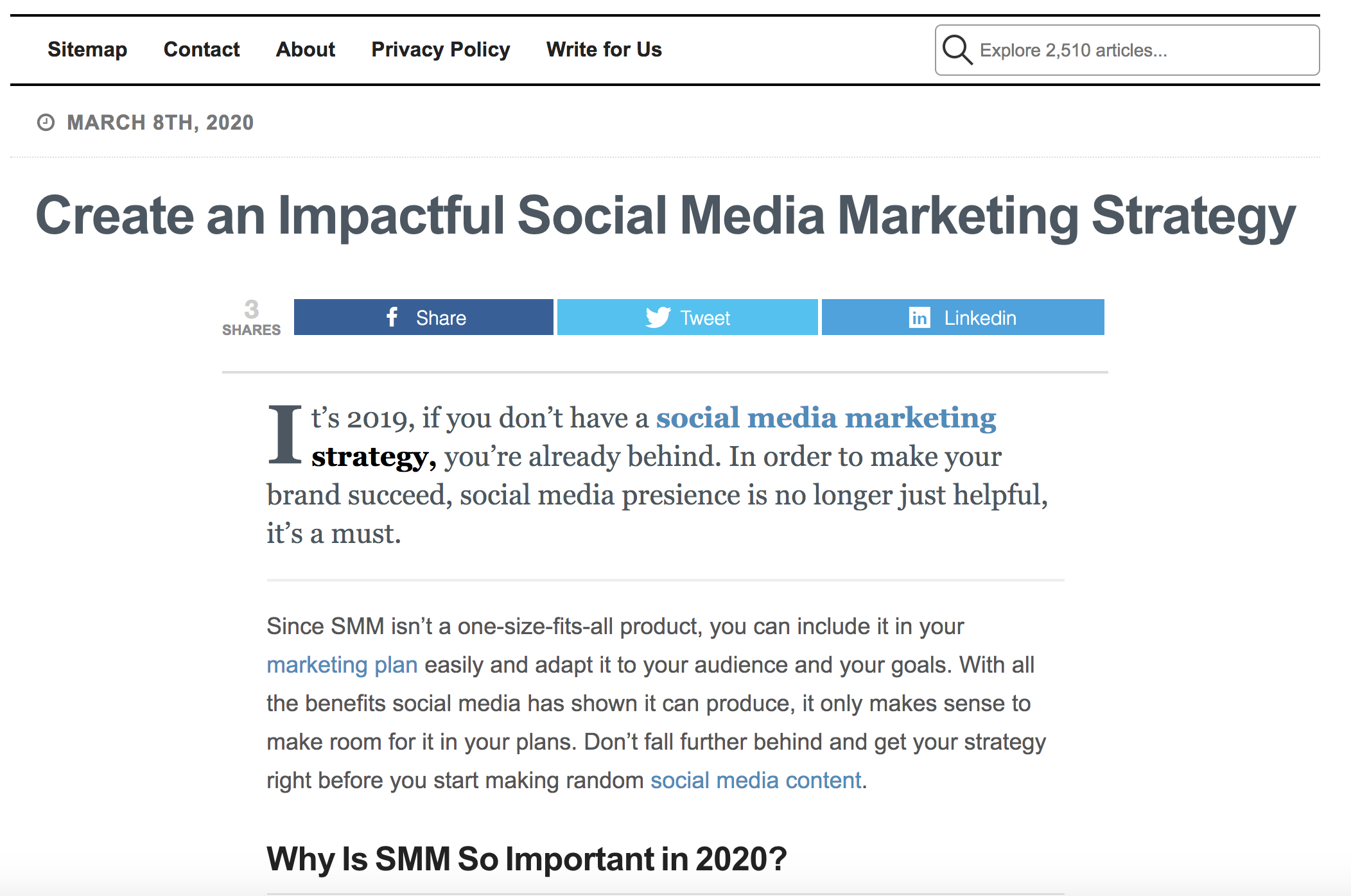
Guest posts that use exact-match keywords as anchor text with the sole purpose of building links are violating Google's guidelines, and these links can (and do) lead to penalties — a penalty for unnatural inbound links for the website the link leads to, and the site that is linking to them can get an outbound link penalty.
It is obvious to readers that the link is not there to help them, and it is obvious to search engines that the link is not there as a helpful resource — it is a red flag that indicates a link exchange, a sold link, or a link scheme that violates guidelines:
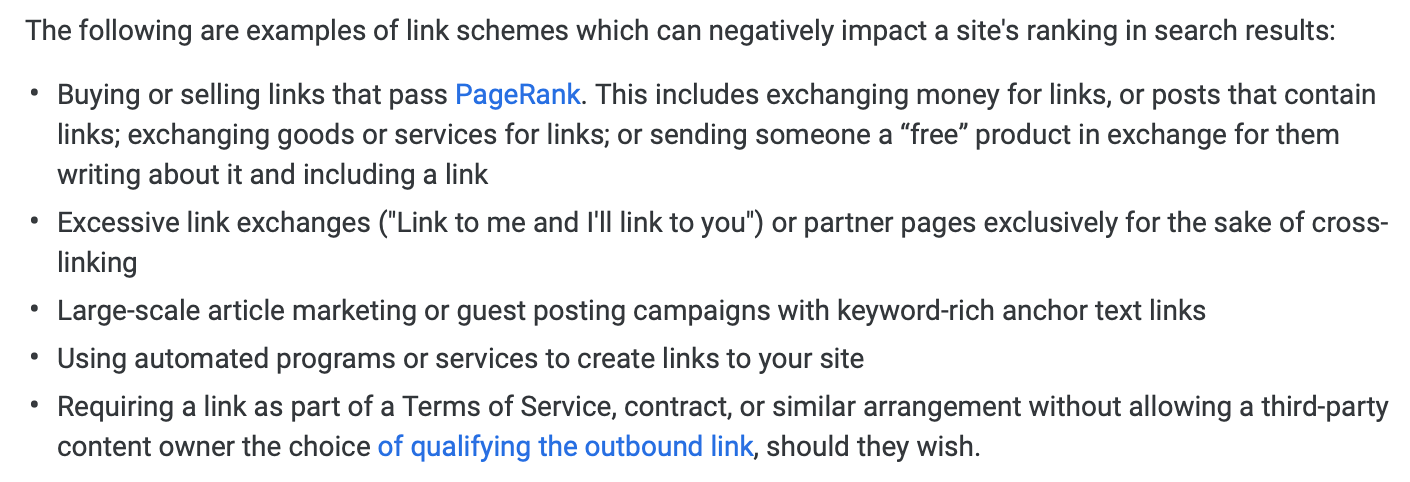
Most sites nofollow links from guest posts to avoid a potential action from Google; this should be utilized in the content and in the author's signature. Google stated in September of 2019 that rel="nofollow" links "are treated as hints about which links to consider or exclude within Search."

Tips to Avoid A Penalty:
Revisit your current link building strategy. Posting hundreds of press releases with links leading to your website is not a cutting-edge SEO strategy.
Avoid excessive use of keyword-rich anchors in the text (if used, try to diversify them, so you don't have hundreds of the same anchor text in backlink).
Make use of rel="nofollow" in an author's signature or text description.
Avoid direct promotion of your product or service.
Tips to Get a Penalty Removed:
Set rel=”nofollow”, rel=”sponsored”, and/or rel="ugc" attributes.
Disavow or remove if nofollow or sponsored attribute did not work.
PBN and Link Networks
Case frequency: 27%
Building private blog networks and link networks are yet another toxic practice that does the opposite of enhancing your SERP results.
PBNs are usually created with free blog services and standard templates. We noticed that, to some extent, the content varied from one blog to another, but the anchor texts typically contain exact match keywords with limited variations.
The only way to avoid a Google penalty, in this case, is to remove or disavow these links.
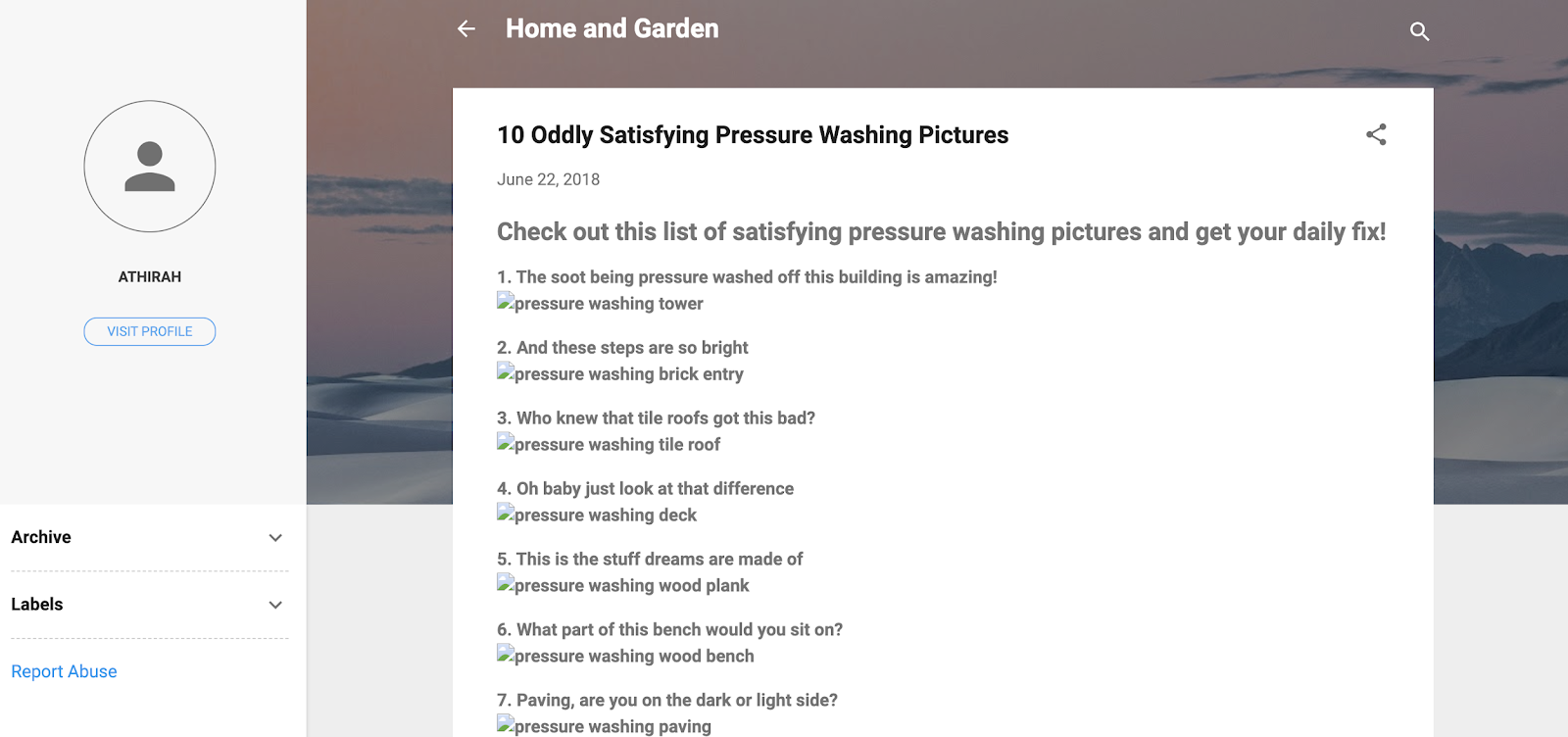
A typical PBN domain contains few inbound links and shows poor performance in search results.
How to determine if a site is a spammy PBN:
It has been launched just recently or the owner recently changed.
It has poor traffic performance.
You don’t get much traffic from the PBN.
It has a low Authority Score.
The domain lacks Privacy Policy and Contacts.
User-Generated Spam
Case frequency: 16%

These kinds of toxic links include:
Spammy links from forum posts.
Links in profiles and signatures.
Spammy followed links in comment sections.
Tips to Get the Penalty Removed:
Disavowing UGC spam links is the best option to keep your backlink profile clean.
Even though Google states that they ignore links in forum profiles, we did spot such forum links in profiles among the penalty cases covered. We revealed that, in this case, a website usually gets penalized for the following:
Obvious spam, posted using spam-posting apps.
Disguised links, such as goods promotion and contact links.

Tips to Avoid A Penalty:
Use the rel="ugc" attribute Stop spammingTip to Get a Penalty Removed:
Disavowing UGC spam links is the best option to keep your backlink profile clean.
Web Directories and Link Listings
Case frequency: 16%
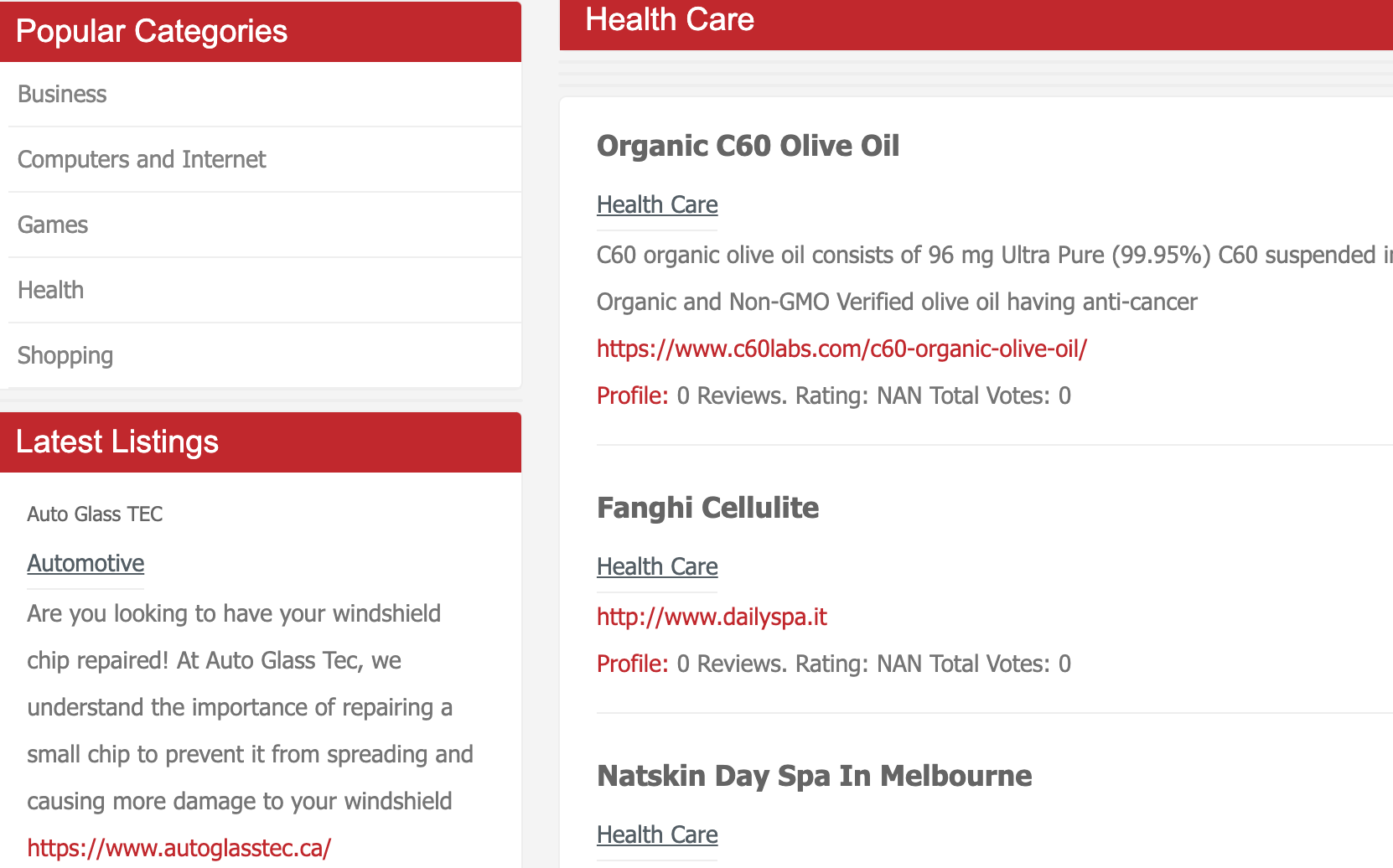
To get a penalty, in this case, your website must have dozens of toxic backlinks distributed across web directories and listings. We noticed that usually, 3-5 links are not enough for a penalty, but this does not mean you don’t need to audit such links frequently.
When monitoring them, pay attention to directories’ and listings’ traffic and performance in the SERPs.
Tips to Avoid A Penalty:
Audit backlinks from web directories and link listings frequently.
Monitor how much traffic these directories and listings drive to your website and their overall performance in SERPs.
If a link generates valuable referral traffic, ask the webmaster of the site where the link is situated to set rel=”nofollow” or rel=”sponsored” attributes.
Avoid using this link building strategy widely and only add links to high-quality websites.
Tips to Get a Penalty Removed
Remove these links.
Disavow any links you can’t remove.
Pure Spam
Case frequency: 14%
Google is very sensitive when it comes to pure spam links; they simply have zero tolerance towards such search optimization efforts.
Pure spam cases include:
Keyword stuffing (in anchor text).
Sneaky redirects.
Links irrelevant to the topic of the page.
Tips to Avoid A Penalty:
Just never consider using such SEO tactics in the first place.
Tips to Get Penalty Removed:
Remove the link.
Disavow the link.
Direct Ads and Affiliate Links
Case frequency: 10%
Google just loves spotting all those “Buy now”, “Sign up now” links and discount offers, even if they are in the form of a coupon banner.
If you are promoting other brands’ products or services Google asks that you use the rel=”nofollow” or rel=”sponsored” attribute (adding an affiliate’s commission disclosure is highly advised).
Below is the case of a penalty imposed despite displaying a disclosure on the page (the links, however, were dofollow.)
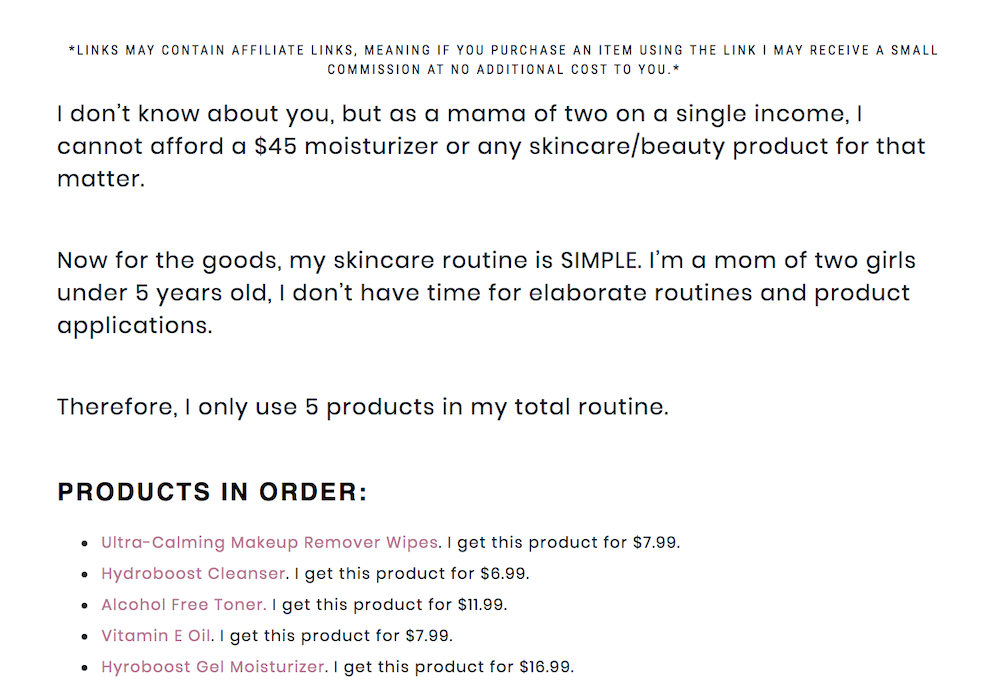
Tips to Avoid A Penalty:
Set rel=”nofollow” or rel=”sponsored” attribute.
Tip to Get a Penalty Removed:
Disavow or remove if nofollow or sponsored attribute did not work.Business Directories and Bookmarking Sites
Case frequency: 10%
Don’t get us wrong - not all business directories are bad. What is peculiar about this case is that there was not a single popular directory among those we looked into — all of them were of low quality. So, if you have listed your website on directories that fall under this category, then remove these links (or disavow them if you can’t remove them).
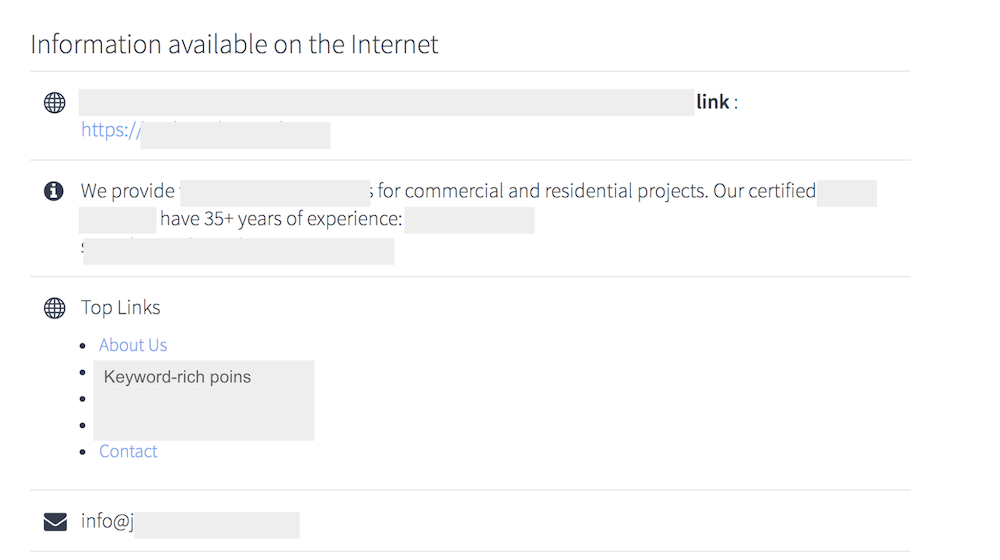
Links in Widgets
Case frequency: 7%
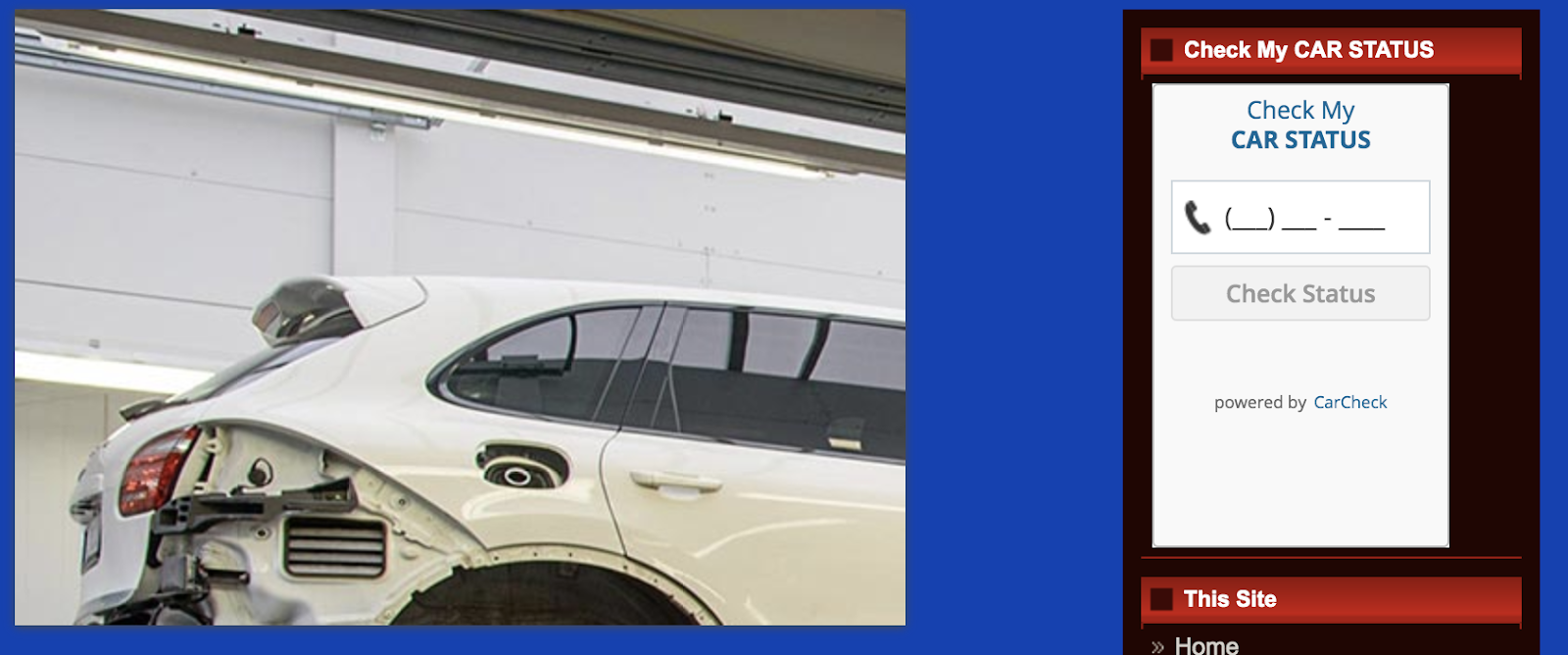
The rule here is simple — if you allow third-party sites to post widgets with embedded code pointing to your website, always add the rel=”nofollow” attribute, and if you cannot get a nofollowed added, disavow.
The only exceptions that we noticed to this rule were the links that direct to a topic-related page on your website (for example, rating widgets leading to a specific company- or user-related section on your website).
Also, some free widgets that you can use on your website force you to link back to the service that provided the widget without a nofollow attribute, so keep this in mind.
Hidden Links
Case frequency: 4%

You have to deliberately use a hidden links strategy to get penalized for this. The cases that we discovered usually had links disguised as plain text.
Tips to Avoid A Penalty:
Make links visible and set rel=”nofollow” attribute.
Request that the link is removed.
Disavow the link if your request has not been successful.
Sitewide Links
Case frequency: 4%

These links are often located in the blogroll, footer, or sidebar. If an inbound link contains words like “Powered by”, “Website Designed by X-Company”, especially if there are keywords, we highly recommend dealing with such links ASAP.
Tips to Avoid A Penalty:
Set rel=”nofollow” attribute.
In some cases replacing anchor text works.
Remove the link.
Disavow the link.
Minor Cases
The cases below had less than 1% representation in our research.
Old job posting. Usually, Google files warnings to webmasters that own job sites, but you are responsible for not removing an outdated job ad, resulting in a penalty.
Product review links.
Links in podcasts. A link to the company (branded, naked links), money anchor links, description with keyword stuffing.
Scholarship links. These links are aimed at getting traffic from .edu resources. If your offer is not related to the topic, you most likely will be penalized.
Hotlinking. A direct link to another website's content (images, videos, documents, audio files, etc.), resulting in bandwidth theft of the website where the content is hosted and copyright infringement.
Adult content links.
Links in automatically generated content.
Reciprocal links.
Infographics links. If there is excessive usage of infographics that bring low value to users and were created for the purpose of gaining links in mass, it could be considered manipulative by Google.
How to Avoid a Google Penalty for Inbound Unnatural Links?
If you want your link-building strategy to constantly pay off, always review your backlink profile. Use the SEMrush Backlink Audit Tool to check bad links. Here are some steps to follow:
Conduct a detailed backlink audit of your profile on a regular basis (at least once a month).
Monitor your backlink profile for an excessive amount of suspicious inbound links types.
Always evaluate anchor texts and revisit them; avoid excessive use of repeated anchors. If you are using money anchors, vary them with SEMrush Keyword Magic Tool. Use similar or related keywords.
If in doubt, always use the rel=”nofollow” attribute.
Get rid of pure spam — remove or disavow such links.
How to Recover from a Google Penalty for Inbound Unnatural Links?
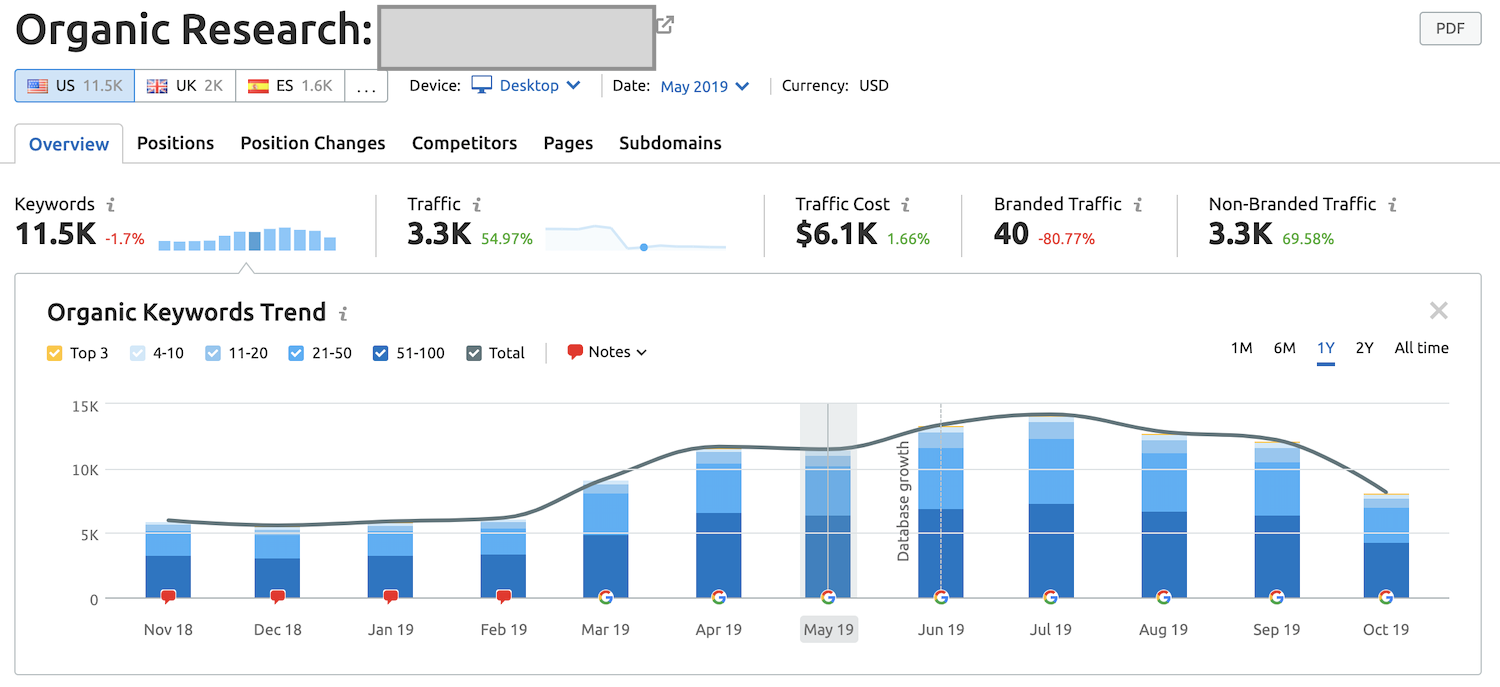 Example of a traffic drop after a penalty.
Example of a traffic drop after a penalty.
Be patient! Don't try to cheat Google. Just follow these simple steps.
1. Collect this information:
How exactly the penalty affected you? Was it sitewide, or did it hit only a property, specific page, or a section of the site?
Examples of unnatural URLs from Google.
Your website’s rankings, traffic, keywords, and pages with obvious ranking drops.
Links’ velocity of your website. Pay attention to irregular spikes in data.
Our Backlink Audit tool monitors and checks profiles for new backlinks. It notifies users about any suspicious changes in their projects. This information is based on new data from Backlink Analytics as well as updated data from a user's integration with GSC or Majestic.
Backlinks data from different sources, data from Google Search Console is a must (you can easily upload the data to Backlink Audit Tool).
2. Conduct an in-depth analysis of your backlinks.
Carefully analyze all your inbound backlinks and classify them accordingly:
Good
Paid
Spammy
3. Contact those responsible.
Ask them to remove a toxic link pointing to your website. If you think a link is valuable, contact the webmaster and ask him to change the link attribute to rel=”nofollow”.
Side Note: If you are using our Backlink Audit tool, go to the "Remove" section. We automatically try to find contacts related to the particular website - this is a huge time-saver.
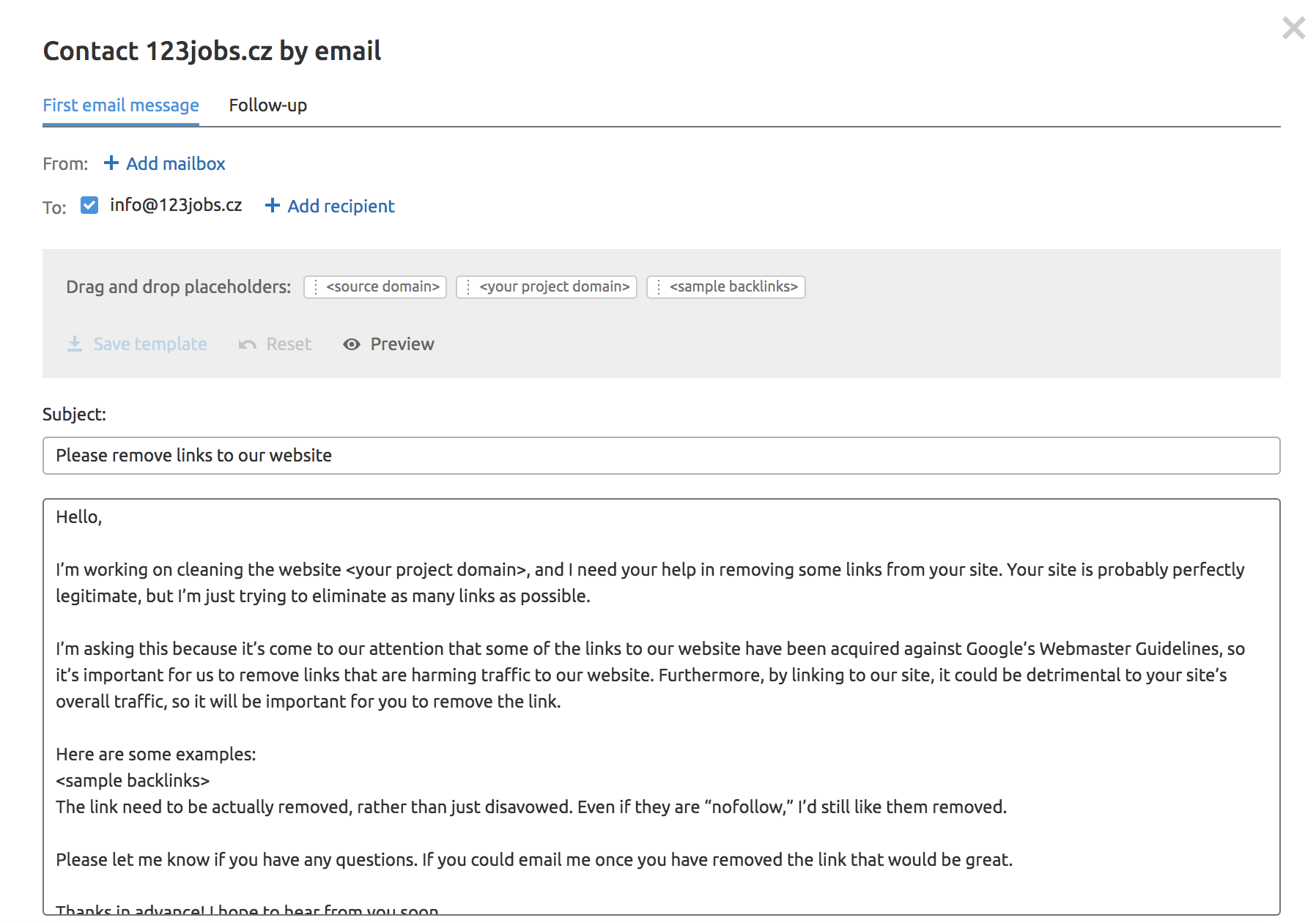 Example of an email users can send to request changes related to links.
Example of an email users can send to request changes related to links.
4. Disavow carefully!

Prepare a .txt disavow file (you can do so using the SEMrush Backlink Audit) and submit the file to Google.
5. Send a Reconsideration Request.
Submit your reconsideration request to Google with a detailed description of what steps were taken and what was cleaned up.
Prevention is the Key
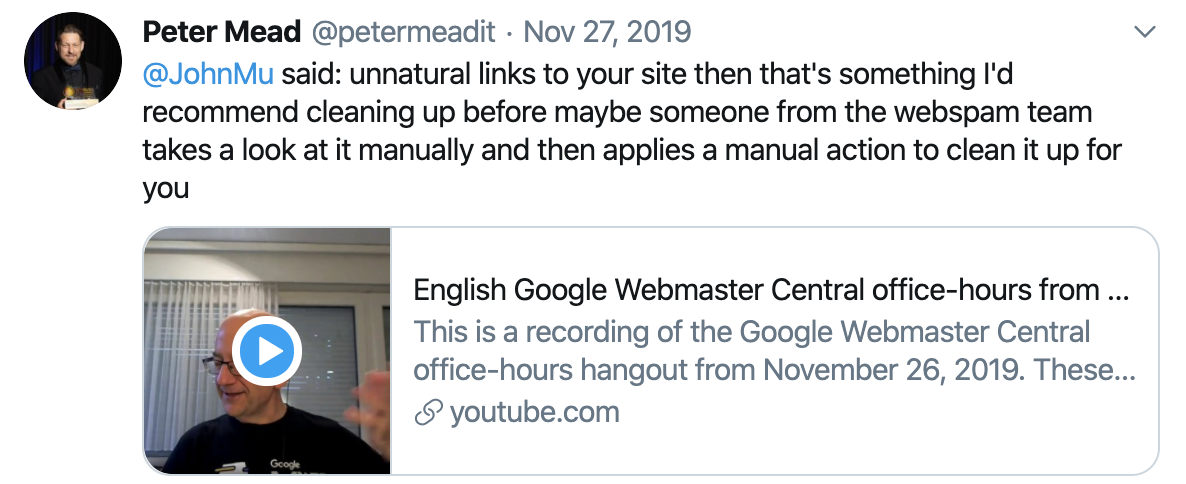
Dealing with Google penalties is definitely a tricky issue; that is why it is important to run constant audits of your backlinks, keep your backlink profile clean and monitor for weird breaks in data.
You might think that a Google penalty won’t hit you, but, what the SEMrush research revealed is that even a dozen unnatural links can get your website penalized. So, stay on the safe side (and always use white-hat tactics)!
Innovative SEO services
SEO is a patience game; no secret there. We`ll work with you to develop a Search strategy focused on producing increased traffic rankings in as early as 3-months.
A proven Allinclusive. SEO services for measuring, executing, and optimizing for Search Engine success. We say what we do and do what we say.
Our company as Semrush Agency Partner has designed a search engine optimization service that is both ethical and result-driven. We use the latest tools, strategies, and trends to help you move up in the search engines for the right keywords to get noticed by the right audience.
Today, you can schedule a Discovery call with us about your company needs.
Source:





